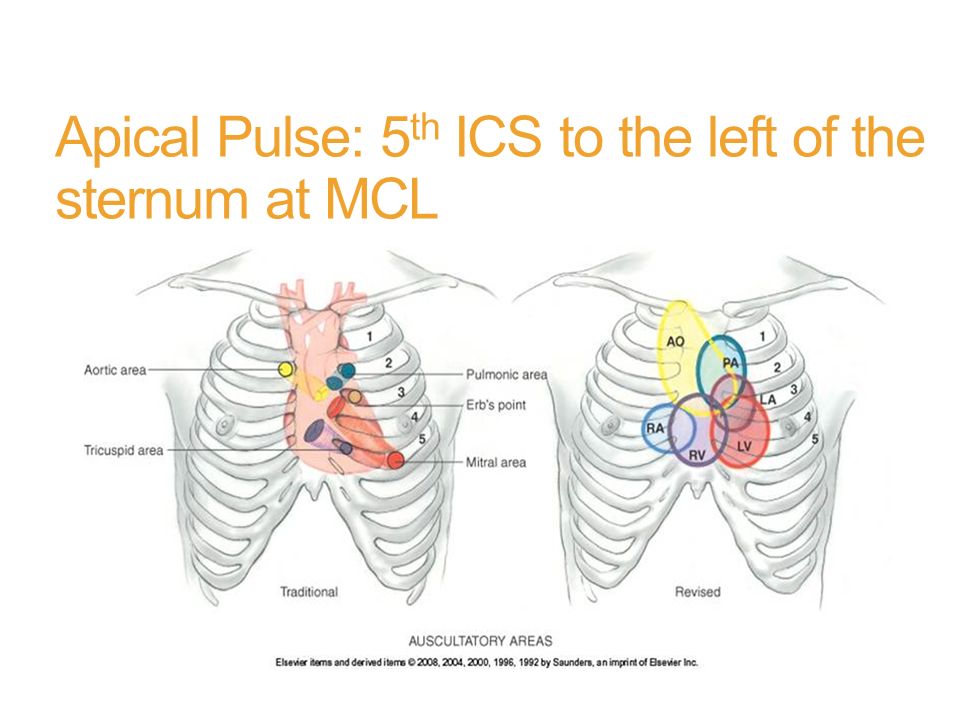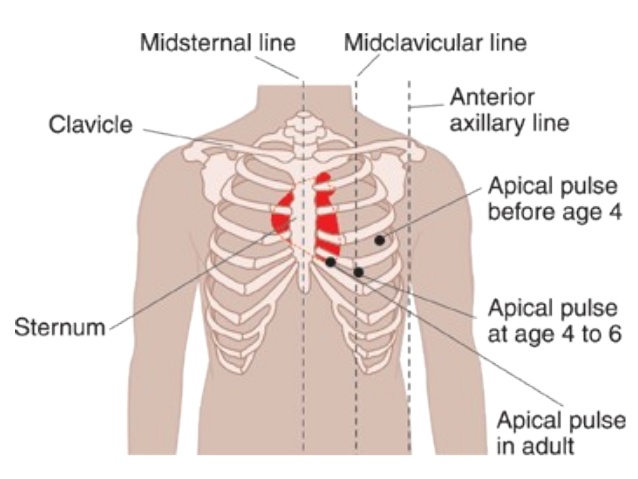What is Apical Pulse: Definition and Process of Measurement
Where is Apical Pulse Located?
The pulsation located at the topmost section of the heart is termed as the apical pulse. An apical pulse can be measured by listening over the apex of the heart using a stethoscope. The lower tip of the heart is known as the apex, and it is located at the point, which is 2 inches below the level of left nipple. The measurement of the apical pulse is preferred when the person has a weak pulse or an irregular one. An apical pulse is generally used by the medical specialists to examine the heart rate of infants or the cardiac patients. It is also known as “point of maximum pulse” or PMI. (1)
How to Take Apical Pulse:
- Locate the collarbone or the clavicle located on the uppermost part of the rib cage. Also, locate the first rib, which is located just below it. Once done, feel the first intercostal space. Intercostal space is the area with the gap between two ribs.
- While counting the ribs, move downwards to reach the fifth intercostal space. It will be located between the fifth and the sixth rib. You’ll be now able to sense the apical pulse, once you reach the initial point of the midclavicular line and the fifth intercostal space. The midclavicular line is the imaginary line which initiates from the left end of the collarbone to reach the nipple (2).
- The apical pulse can be felt using a stethoscope or even by touching. However, usage of the stethoscope is recommended for accuracy. Also, in the case of women, the apical pulse is situated beneath the breast.
- Observe the apical pulse while the person breathes normally. Count the number of pulse in a minute.
Ideal Value of Normal Apical Pulse Rate
The ideal value of the apical pulse rate for adults lies in the range of 60 to 100. For newborns, this value can be in between 80 to 140, while for the children of 4 to 9 years of age, this value can be anywhere from 75 to 120. For children up to the age of 15, this value can be 50-90.








